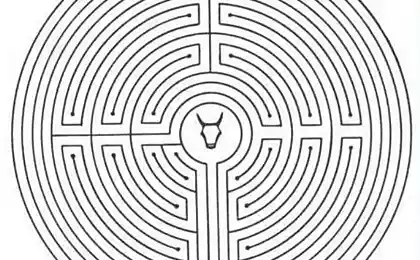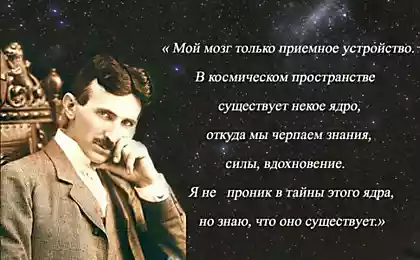482
4 the myth of the light

The possibility of creating a lightsaber, 7 colors of the rainbow and other perceptions of the world.Postnauka debunks scientific myths and explains common misconceptions. We asked our experts to comment on the popular perception of motion and the physical properties of light.The lightsaber can be created.True in part.
At the words "light saber" most people usually imagine the traditional weapon of the Jedi of the famous Saga "Star wars." Shining blade reflect the shots from the blasters, blocking enemy attacks and makes exit through the powerful door, and then folds into a compact handle and stored without requiring recharging. Convenient, but really?
Available technology the closest possible to name technology of plasma and laser cutting. The plasma torches create a superhot plasma arc, which can be pulled into the beam using a magnetic field. Such plasma arc cut metals and refractory alloys. But the extent of this arc on the order of 10 cm, and the arc, the shape of which is in the form of a beam supported by the applied magnetic field tends to deflect under the influence of any external fields. In addition, the plasma beam has a temperature from a few thousand to a couple tens of thousands of degrees, that is, to fight this sword can only be in a special protective suit.
Laser cutting uses a high power laser focused into a small spot. High concentration of energy allows you to cut virtually any material. The length of the beam of such a laser may range from several microns to hundreds of meters. However, in order for such a sword functioned, it is necessary to provide good cooling and a powerful power source. At the present stage of technology development that's clearly not all going to fit in the hilt of the sword, and will require an external unit the size of a small suitcase. Therefore, to create the lightsaber will require new materials with high conductivity, and heavy duty compact power sources.
However, it should be noted that even in the presence of heavy duty compact power supply and cooling systems that fit in the handle of the sword, there is still a problem with the physical nature of the light beam. Even at a high concentration of light can not act as a rigid body, and when crossing the blades of these lightsabers will simply pass through each other and not block the shot. And a shot from a Blaster will go through a "blade", and will not be reflected back.
Although today the Internet fans of Star wars can find a sword that looks like a weapon of the Jedi, power of about 200 mW, with a nozzle made of Plexiglas, which resemble a sword blade, and charger included.
Vladimir Belotelov, doctor of physico-mathematical Sciences, associate Professor of Photonics and microwave physics, faculty of physics, Moscow state University, head of the group "Magnitooptika, plasmonics and nanophotonics", Rozluch light is a stream castelbrando partly.
Strictly speaking, the presence of a photon in the given point (or a small spatial region) with certainty we can say only at the moment of its registration, for example when triggered, the photo-detector. Excessive literal idea of "flying" photons, even smeared in space due to the uncertainty principle, can lead to apparent paradoxes.
Consider the following example: the light falls on the semi-transparent mirror that partially reflects it (say, rotate 90 degrees) and partially transmits. It seems obvious that a photon with some probability pass through the mirror, and otherwise affect them. And really, if you put in the photodetectors of the reflected and passed beams, we will see that the signal of each one of them represents the comb pulses corresponding to individual photons, and the detectors not trigger simultaneously. This is fully consistent with the expected picture: the photon "chooses" which way to go. For this experiment, it is important to use a relatively weak optical radiation, to prevent accidental coincidence counts caused by the simultaneous registration of two different photons.
Now let's complicate the scheme: put detectors instead of the conventional mirror and bring the two beams on the screen, so that it was observed the interference fringes. They arise in fact, even for very weak sources. But it does not fit into the simple "photon" picture! For weak sources, the simultaneous presence in the scheme of two photons is practically impossible. But if the photon is reflected from the semitransparent mirror, in the corresponding past photon interference channel nothing — and Vice versa. What photons interfere? The answer to this question is the Copenhagen interpretation of quantum theory: the choice of the trajectory on which the moving photon, is not at the time of passage of the semitransparent mirror, and the time of registration (if received information allows for such a choice to make). Thus, in the interference experiment the photon propagates simultaneously in two different trajectories (the system is in a superposition of States of transmitted and reflected photon) and interferes in some sense with yourself
Thus, a single photon can simultaneously be in the beam and over a thousand miles away. Literally to say that the beam of light consists of photons is difficult (such arguments are the basis of the Einstein — Podolsky — Rosen).
The situation can still be confusing, by entering into the consideration of the biphotons, quantum-entangled state of two photons. With their participation it is possible to build States that are uncertain not only the path of motion of photons, but, for example, their number.
In the end it is worth noting that at least part of the described experiments, in principle, can be supplied not only with photons, for example, in the interference of electrons is not unusual. And the photons have a number of unique properties. First of all, zero rest mass and charge makes it easy to create and destroy photons, getting status with an indefinite number of particles. And secondly, photons weakly interact with the world that allows you to get rid of decoherence — the main "enemy" of quantum properties.
Alexey Rubtsov, doctor of physico-mathematical Sciences, Physical faculty, Moscow state University, Professor, Department of quantum electronics, external researcher RCCV rainbow seven tsvetoproba.
It's not a myth, the rainbow really seven colors. It is associated primarily with the structure of our eyes, as the color is not that other, as a feature of human eye perception of light that is around us, and the spectral properties of the rainbow.
The colors that we see in the rainbow, is the so — called pure colors. That is, the rainbow works for us as a spectral device which separates light passing through the atmosphere at different wavelengths. Our eye is designed so that most of the colors we perceive correspond to the same wavelength, group of wavelength, multiple components.
In the rainbow of the composite colors. In the rainbow the wavelength of light varies continuously along the height of the rainbow, but at each point of a rainbow wave length exactly one. Our eye is associating different wavelengths — pieces of the rainbow in a particular color. Therefore, colors in the rainbow really turns out about seven, they gradually merge into each other, but because it's pure color and there are no combinations, our eyes are lost, their associates with very specific colors. The same seven colors we see through the prism or diffraction grating — they are components of solar radiation.
It so happened that the eye is naturally tuned to the spectrum of the Sun and delicate where there is solar radiation. But as in the world around us pure color in the rainbow, in almost pure form do not occur, our brain used to recognize the combinations of different wavelengths. Is it "like" a few more than analyze pure color
The sensitive element of the eye are the cones, they are three types, each sensitive to its wavelengths. Since the spectrum sensitivity of each cone is very wide and in a rainbow wavelength varies smoothly, the brain assigns in broad areas the same answer — about the same color, still about the same.
When eyes get different but close wavelengths, the eyes of their associates from about the same color and doesn't vary. Far more nuanced is occurring when the eye gets a lot of different wavelengths. If you send two weak, but very different along the length of the components, the eyes are much more willing to "say" that is a new color, than in the case of two waves from one end of the spectrum.
It is a feature of view. That is why we think that in the rainbow colors a little, although there is presents the whole range of solar radiation, that is, all the wavelengths that the eye generally sees. It would seem, from the colors of the rainbow can make a whole range of other colors, but due to the fact that the eye is sensitive to scatter him "good" when one wavelength is correlated with one part of the spectrum and the other with another), the eye sees no need to pamper us with a variety when looking at a rainbow.
Alexey Akimov, candidate of physico-mathematical Sciences, head of the group "Quantum simulation" of the Russian quantum center, teacher at MIPT, Lebedev Institute, Moscow, researcher at Harvard UniversityСвет not ostrovitianova.
The same, that is dependent neither on the frequency nor the power of the light beam, or the choice of the reference system is only the speed of light in vacuum. In the material medium the speed of light is changing — for example, in glass or water it is approximately 1.7 times smaller. Distinguish between phase and group velocities in the substance: the first is responsible, for example, for the laws of refraction and reflection, and the speed of signal transmission in optical communication lines. Phase velocity — the value is in some sense non-physical, it does not meet the transfer of energy or information. The phase velocity in some cases can exceed the speed of light — it does not contradict anything. Similarly, the speed of light, in principle, can move a sunbeam — he can't move any of the points visited, the one with will
The group velocity in a substance is always less than the speed of light in vacuum. Question: how much? Since the group velocity associated with the rate of change of refractive index with frequency for the strong slowing down of light (and it has technological importance for optical signal processing) typically use artificial environment, in which the refractive index abruptly increased in a narrow frequency region. It is important that on the edge of this region where the group velocity is anomalously large, the system does not absorb the light. This requires very good control over the settings made in the system. Such control is possible, in particular, for systems of ultracold atoms in traps — cooled to a millionth of a Kelvin corresponds to the exception to such a fundamental factor of "noise", as the thermal motion. To record the experiments conducted in 1998 by a group of Lene Hau (Lene Hau, light was slowed to 17 m/s, i.e. approximately 17 600 000 times. Subsequently, the same group has learned to completely stop the light, "locking" it in the cloud of ultracold sodium atoms. published
Alexey Rubtsov, doctor of physico-mathematical Sciences, Physical faculty, Moscow state University, Professor, Department of quantum electronics, external researcher of the Roman Catholic Church
P. S. And remember, only by changing their consumption — together we change the world! ©
Source: postnauka.ru/faq/44414























